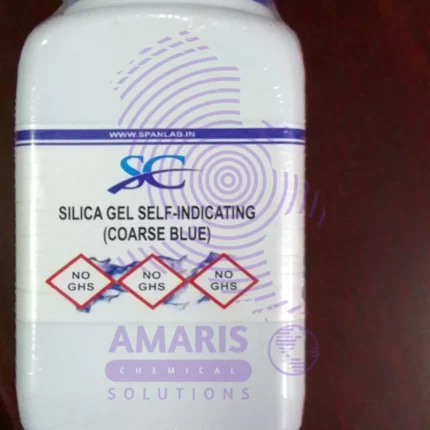
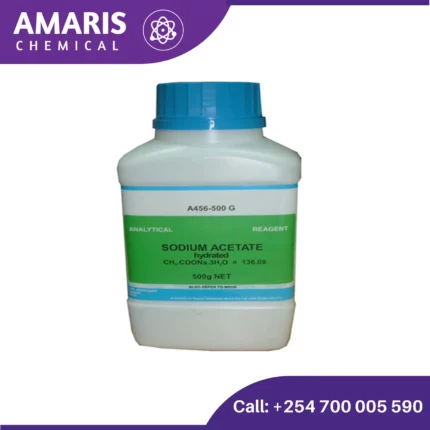
Sodalime with indicator 500gm
KSh1,500.00 Original price was: KSh1,500.00.KSh1,200.00Current price is: KSh1,200.00.
Sodalime with an indicator is a substance often used in medical and laboratory settings, primarily for the absorption of carbon dioxide (CO₂) and certain other acidic gases. The indicator in sodalime serves a crucial function by visually signaling when the sodalime has been exhausted and can no longer effectively absorb CO₂. Here’s a detailed look at its components, functionality, and use:
Components of Sodalime
- Sodium Hydroxide (NaOH) and Potassium Hydroxide (KOH): These strong bases are the active components that react with CO₂ to form carbonates and water.
- Calcium Hydroxide (Ca(OH)₂): This provides a medium in which the reaction takes place and also participates in the CO₂ absorption process.
- Water (H₂O): Necessary for the chemical reaction.
- Indicator Dye: Changes color based on the pH level, signaling when the sodalime is no longer effective.
Chemical Reaction
The primary reaction for CO₂ absorption can be summarized as: CO2+H2O→H2CO3text{CO}_2 + text{H}_2text{O} rightarrow text{H}_2text{CO}_3CO2+H2O→H2CO3 H2CO3+2NaOH→Na2CO3+2H2Otext{H}_2text{CO}_3 + 2text{NaOH} rightarrow text{Na}_2text{CO}_3 + 2text{H}_2text{O}H2CO3+2NaOH→Na2CO3+2H2O
Secondary reactions may involve calcium hydroxide: Na2CO3+Ca(OH)2→2NaOH+CaCO3text{Na}_2text{CO}_3 + text{Ca(OH)}_2 rightarrow 2text{NaOH} + text{CaCO}_3Na2CO3+Ca(OH)2→2NaOH+CaCO3
Uses of Sodalime with indicator
Gas Absorption in Experiments
Sodalime is frequently used to remove CO₂ from gas streams in laboratory experiments. This is important in studies where CO₂ could interfere with the results or where its removal is necessary to simulate certain environmental conditions.
2. Respiratory Metabolism Studies
In studies involving animal or human respiratory metabolism, sodalime can be used to absorb the CO₂ exhaled by subjects. This allows researchers to measure oxygen consumption and other metabolic parameters accurately.
3. Chemical Synthesis and Reactions
Certain chemical reactions and syntheses are sensitive to the presence of CO₂. Sodalime is used to maintain a CO₂-free environment, ensuring that these reactions proceed correctly without interference from CO₂.
4. Incubators for Cell Culture
In cell culture incubators, maintaining the correct gas composition is crucial for cell growth and development. Sodalime is used to control CO₂ levels within these incubators, ensuring an optimal environment for cell cultures.
5. Anaerobic Chambers
Anaerobic chambers are used for growing and handling anaerobic microorganisms, which thrive in environments devoid of oxygen and CO₂. Sodalime helps to scrub CO₂ from the chamber, creating a suitable atmosphere for these microorganisms.
6. Respiratory Equipment Calibration
Calibration of respiratory equipment, such as spirometers and gas analyzers, often requires precise control of gas concentrations. Sodalime can be used to absorb CO₂ during the calibration process to ensure accurate measurements.
7. Environmental Simulation Chambers
In studies simulating various environmental conditions, such as climate change experiments, sodalime can be used to control and maintain specific CO₂ levels, allowing researchers to study the effects of different CO₂ concentrations on plants, animals, and materials.
8. Respiratory Physiology Research
In respiratory physiology research, sodalime is used to remove CO₂ from exhaled air, enabling the study of lung function and gas exchange processes in isolation from the effects of CO₂.
Related products
Acetaldehyde
- Chemical Structure: Acetaldehyde consists of two carbon atoms, one oxygen atom, and four hydrogen atoms. Its structure is CH3CHO, where the carbon atom in the middle is doubly bonded to an oxygen atom and singly bonded to a hydrogen atom and a methyl group (CH3).
- Occurrence: Acetaldehyde can be found naturally in various ripe fruits, coffee, and heated milk. It is also produced by the oxidation of ethanol (alcohol) by enzymes in the liver and other tissues in humans, making it an intermediate product in alcohol metabolism.
Aluminum Nitrate 500gm
Aluminum Potassium Sulphate 500gm
Physical Properties:
- Appearance: Colorless, transparent crystals or white powder.
- Solubility: Soluble in water but insoluble in alcohol.
- Melting Point: Decomposes at high temperatures before melting.
Chemical Properties:
- Molecular Formula: KAl(SO₄)₂·12H₂O
- Molecular Weight: 474.39 g/mol (for the dodecahydrate form)
- Acidity: It is slightly acidic in aqueous solution.

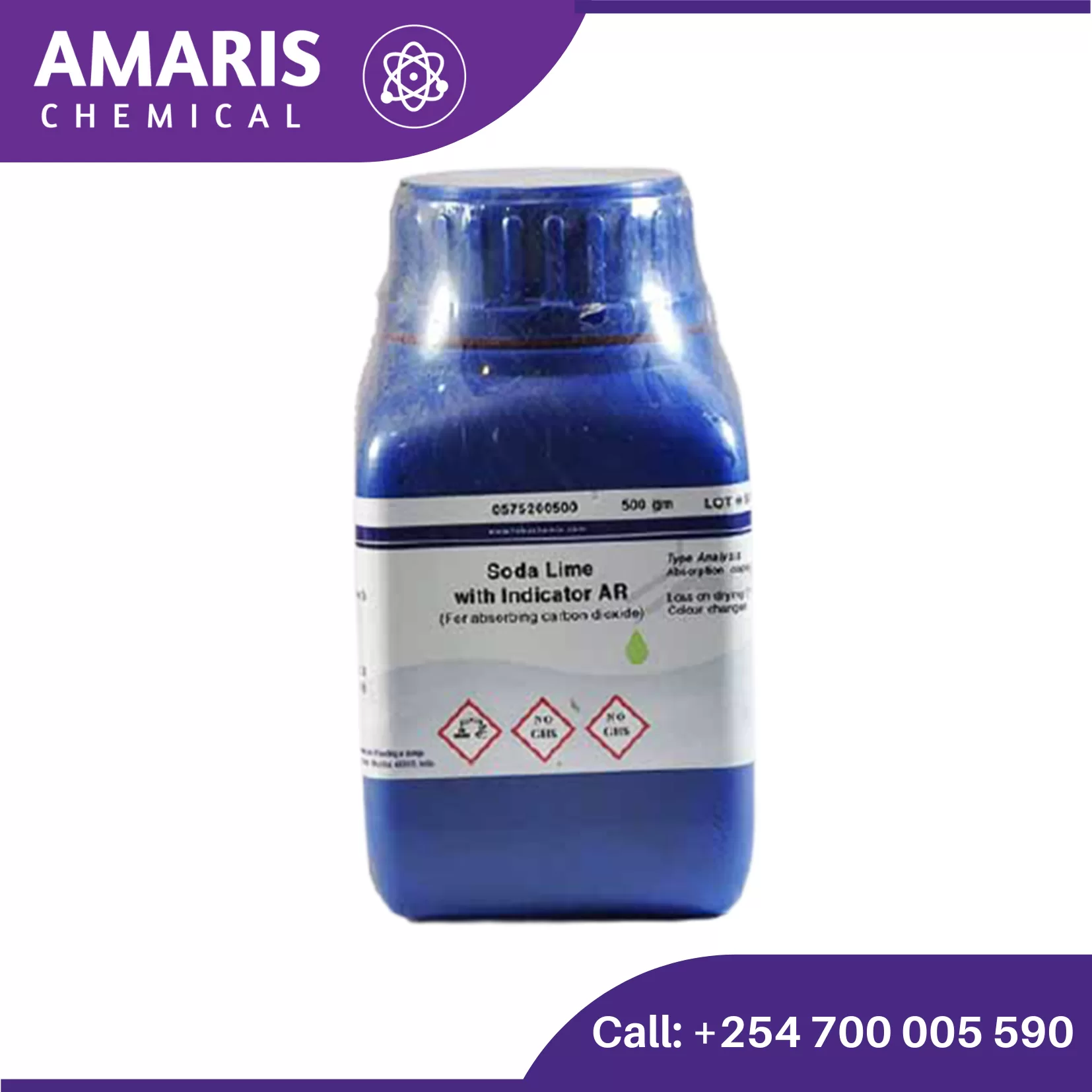
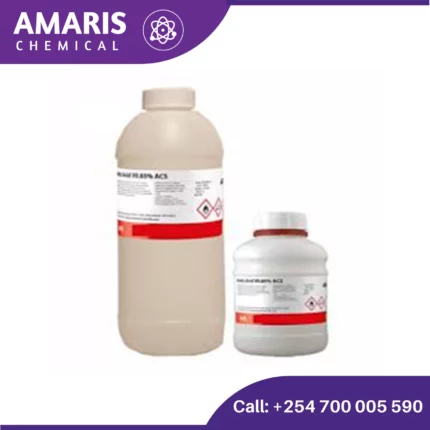
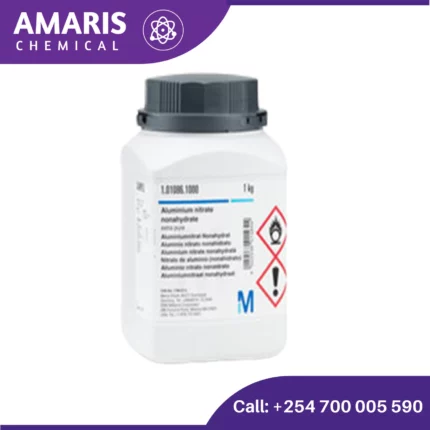

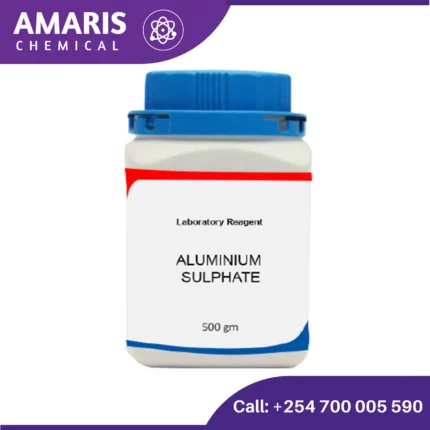
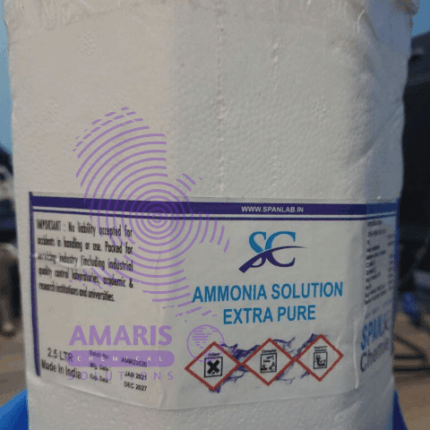
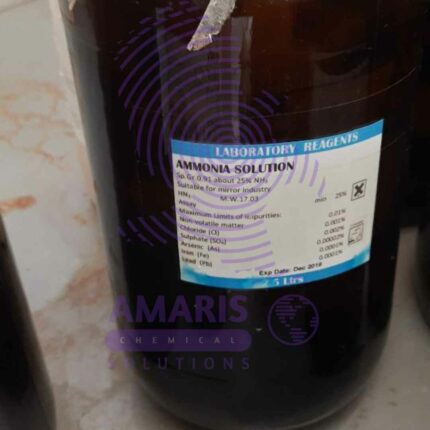
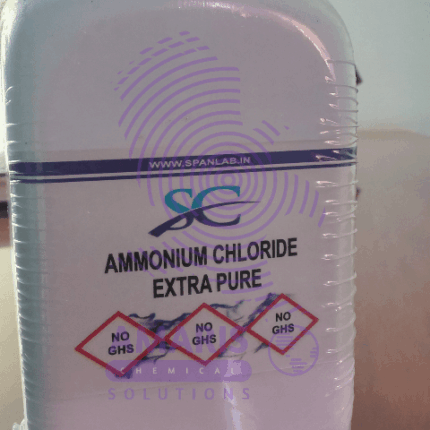
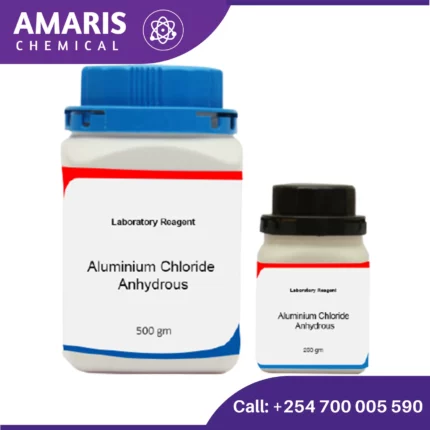
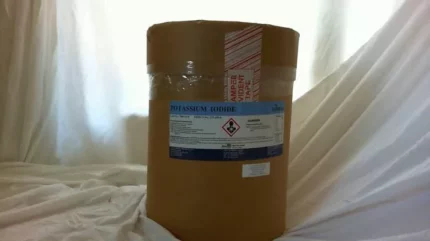







Reviews
There are no reviews yet.